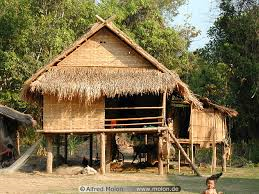Analyzing the fluidity of Iwan’s space in traditional houses of Bushehr
Keywords:
Boushehr, traditional houses, fluidity, IwanAbstract
The reason tochoose this issue is paying attention to the spatial fluidity of Iwan andcommunicational and functional values of various kinds of Iwan in traditionalhouses of Boushehr. The traditional architecture provides the material andspiritual spaces in a way that has sincerity, intimacy, balance and peace. Iwanhas the conceptual and functional richness and in terms of form it has a greatrole in raising the spatial value and besides of an open space it leads tocreate a valuable structure. To achieve the spatial fluidity on Iwan, we musthave a special look to basic designing elements (shape, scale, pattern andbalance). We should look at the fluidity of spaces as a contiguous whole and aunited collection and avoid the one-dimensional and discrete look at space.Fluidity gives the audience a sense of physical movement and moves their eyesnot their body. The visual motion means when we stand fixed at a point inspace, our eyes have motion and move from one point to another.This raises aquestion that how the fluidity of space affects on Iwan’s forms of traditionalhouses of Bushehr which is one of the important factors influencing the form ofthe building.In this research first of all the concept and meaning of Iwan isdefined and then the spatial fluidity and various kinds of spatial fluidity ofIwan and Iwan fluidity of traditional houses of Bushehr has been discussed. The research method of this study isobjective, descriptive-visual observation, review of documents, analysis ofcases and library studies relied on theoretical concepts. The major findingsand conclusions of this study shows that Iwan as a seasonal place for sittinghas different orientation in the building and because of its climatic reasons,it is a semi-open space with different functions such as: it acts as a linkbetween the open and closed space, a passage and a link space also it hasrelation to the nature and causes cohesion of inside and outside and has spatialfluidity.References
Ahmadi, Z., 1388. Surveying the role of Iwan in roral housing. Nat. confrr. hous. roral phys. dev.
Aminian, S., Khodadadi, M., 1387. Concepts and definitions of functional spaces in the roral houses of
Persian Gulf. Abadi J., N.60.
Ardalan, N., Bakhtiar, L., 1382. Sense of unification. Khak publication.
Chan, A.L.S., Chow, T.T., 2010. Investigation on energy performance and energy payback period of
application of balcony.
Clark, R., Michael, P., 1375. Analyzing and criticizing the architectural masterpieces, translated by Sayed
Mahmoud Madani & Saeed Aghaee. Mohaya publishment. Tehran.
Ghobadian, V., 1385. Surveying the climate of traditional buildings of Iran. University of Tehran.
Gholamzade, F., 1392. Architecture of Bushehr in era of Zand A Qajar.
Glays, W., 1367. The Urartu chitecture translated by Faramarz Najd Samiei. Asar j., No.26&27.
Haeri, M.R., 1374. A research about the using the architecture principles of traditional/ historical houses
in design of modern house, Vol 1&3. Tehran. Ministry hous. dev.
Javadi, A., 1363, Iranian architecture 84 articles written by 33 Iranian researchers. Tehran. Nashre Jadid
,22.
Kajal, A., 1384. The third millennium architecture, architectural and urban development magazine, No.
&79.
Mahmoudi, A., 1384, revision of the importance in traditional houses (special look at Bam). Tehran,
Honarhaye Ziba magazine. No.22,54,55.
Memarian, G., 1387. Acquaintance with Persian residential architecture. Tehran. Soroush Danesh.
Prainto, E., depecker, p., 2002. air flow as the effect of balcony opening design and internal division on
indoor velocity. Ecoled’Achitecture de Nantes Rue Massenet, BP 81931-44319, Nantes Cedex 3,
France.
Saremi, A., Radmehr, N., 1376. Enduring values in Iranian architecture. Tehran. Dep. culture. Her. Publ.
Taghavi, M., 1363. Architecture of urbanization and urban development of Iran in passage of time.
Tehran. Syavly publication.

Published
How to Cite
Issue
Section
Copyright (c) 2020 Mohammad Hasan Kakizadeh

This work is licensed under a Creative Commons Attribution-NonCommercial-NoDerivatives 4.0 International License.



